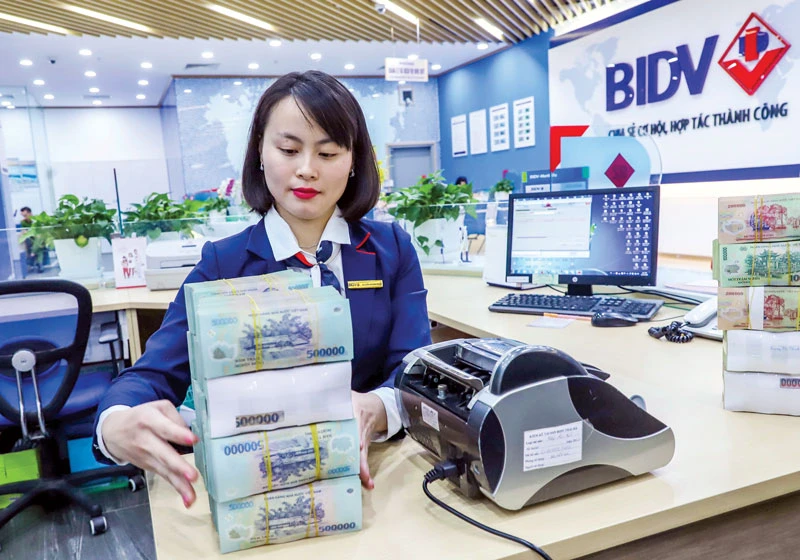
Speaking with Saigon Investment, Dr. Nguyen Tri Hieu, a banking and financial expert, analyzed the situation as obvious because many businesses have reduced revenue due to the Covid-19 pandemic, so their capital need is not as high as last year. When sales decreased, production activities decreased, and the demand for loans for businesses also decreased. Now there is a sharp decrease in interest rates but businesses do not dare to borrow, because if they cannot use capital effectively, they will suffer losses. Even though businesses can borrow, they do not want to borrow, while many businesses want to borrow but cannot afford the loans, which is a paradox of sorts.
JOURNALIST: - Sir, in such a situation how do you forecast credit growth this year?
Dr. NGUYEN TRI HIEU: - The target for credit growth this year is 14%, which is now clearly impossible to achieve. I think for this year a 10% credit growth will look good, and in a worst case the credit could go below 10%. In the first five months of the year, credit increased by only 2%, in the second half of the year it probably increased by 2% to 3%. However, good or bad progress depends on the situation in the second quarter of 2020, but this depends on the containment of the pandemic domestically and also effects from the world economic situation.
In terms of disease control, Vietnam is expected to continue to contain the spread of the disease in first two quarters, and not allow the pandemic to break out again as it did in the first half of 2020. Nonetheless, the world economic situation is very bleak. The number of people infected with the disease are increasing. Even in China, there has been an outbreak of disease in Beijing once again.
In such a difficult world situation, Vietnam's economy will continue to be affected. Although we have good disease control measures in place, our economy relies heavily on imports and exports. The total two-way import and export turnover reached around USD 500 bn, while the GDP is only USD 267 bn, meaning that the import-export turnover is double that of the GDP.
In this situation, if the import-export supply chain is limited or broken, the export market is affected by the countries suffering from the disease, and the demand for goods from Vietnam falls low, and the economy is then seriously affected. Therefore, in a good case scenario, credit cannot grow by more than 10%, and in a bad case scenario, the growth rate will be lower as this depends on the world situation.
- Why are some banks still raising interest rates in the context of slow credit growth?
- Maintaining high deposit rates at present mainly puts small banks at a disadvantage in the mobilization game. They are always thirsty for capital, especially with Circular 41/2016 regulating capital adequacy ratios, they are facing more pressure for raising long-term capital to increase tier 2 capital. In general, the banking system is in excess of liquidity, lots of deposits are not being used up, and deposit rates of many banks are also quite low. However, this year banks can reduce profits because credit growth will not meet the target, while the cost of capital is still high because many deposits have determined interest rates in advance.
In fact, the State Bank of Vietnam has recently used the operating rates to reduce the interest rate level, but banks can only lower the deposit rates when customers renew or deposit in their accounts. For old deposits, especially one-year or longer term deposits, when the term expires, the bank can adjust the interest rate. Therefore, the interest rate reduction by the SBV is only partially effective. Banks' cost of capital is generally very high while credit growth is very low, and the profit situation of banks this year is not as good as last year.
- Sir, many SMEs still need loans, so what more support do they need to recover?
- In my opinion, the only solution to support SMEs is to use credit guarantee funds, which means that some articles of Decree 34 of the Government need to be changed. Firstly, all provinces now have credit funds established by localities, and the budget put into the fund is local. Provinces have little money, so they contribute very little to the construction of local credit funds.
Secondly, according to Decree 34, the credit fund charter capital is at least VND 100 bn and the guarantee balance cannot exceed three times the charter capital, which means it cannot guarantee a loan of more than VND 300 bn. Meanwhile, the guarantee of VND 300 bn for one locality is nothing compared to the demand for loan guarantees of businesses.
Therefore, the guarantee balance on total outstanding loans of SMEs is currently only about 1% to 2%. With such a modest guarantee ratio, current credit funds are very meager and ineffective. I have proposed many times to build a National Credit Fund with charter capital of VND 10,000 bn.
At the same time, the National Credit Fund must be guaranteed by five times its charter capital, so that the guarantee for SMEs can reach VND 50 trn. Although VND 50 trn as guarantee for SMEs is not much, when the total credit balance of the economy is about VND 8,500 trn, of which the outstanding loans for SMEs account for 20%, estimated at VND 1,700 trn to VND 1,800 trn, that guarantee is still better than it is today.
- Thank you very much.




















